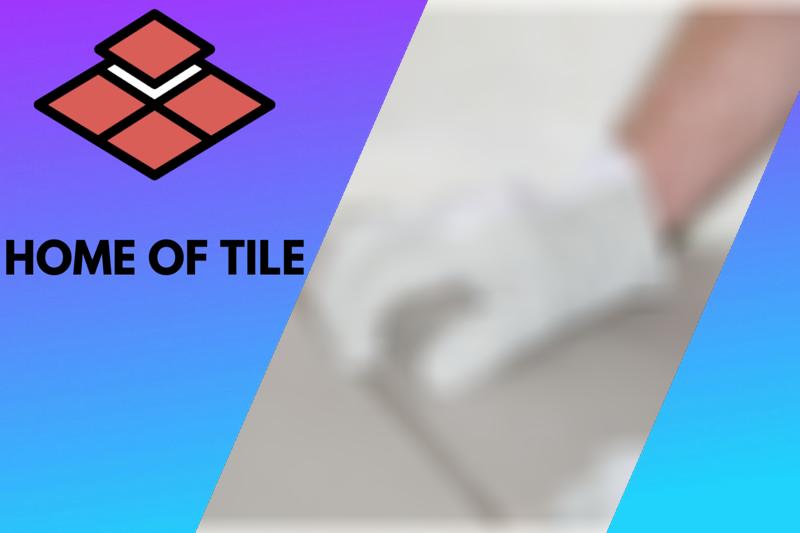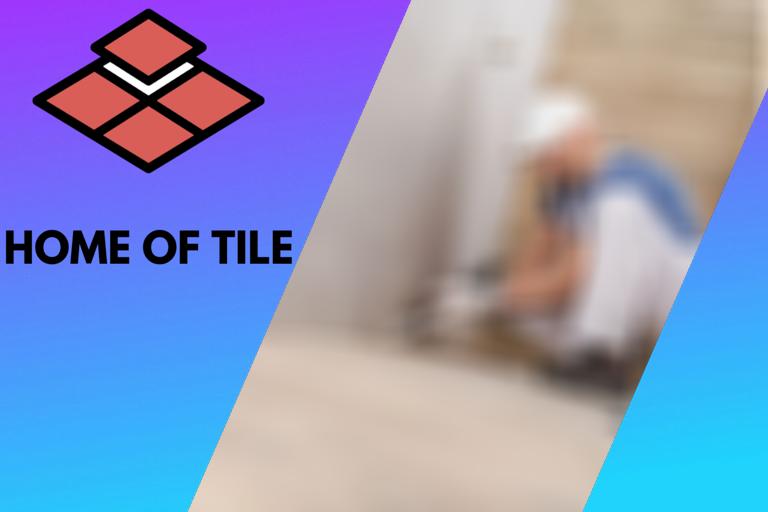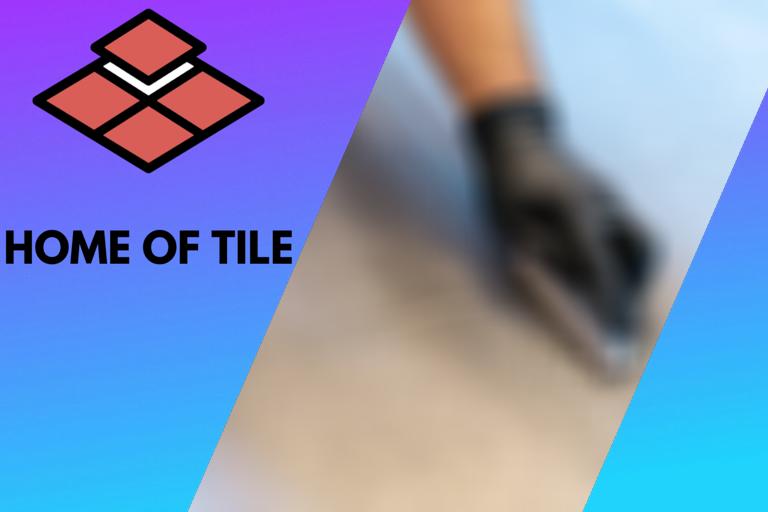Tiling and Waterproofing: 10 things you should know
Tiling enhances the aesthetic value of the floors and walls from many rooms. However, it would be best to take some measures to prevent the tiles’ deterioration over time, particularly for wet or moisture areas. Waterproofing the substate, both wall and floor, before tiling is essential. Water and moisture that seeps into the wall or floor can increase the chance of molt and damage the construction over time.

Many people overlook waterproofing the substrate, which costs them a lot in the long run. Waterproofing the substrate before tiling is not a complex task. It enhances the longevity of the tiles and prevents moisture and water from damaging the substrate. There are different methods to seal the floor before tiling. You can use sealers, moisture-resistant plasterboard, or a decoupling mat like DITRA. All these products are water-resistant and help to seal the surface against moisture.
Contents
- 1 Tiling over a waterproofing membrane, some helpful tips:
- 2 Decoupling mat floor tiling, some helpful tips:
- 3 Tiling on bitumen and waterproofing, some helpful tips:
- 4 Waterproofing and tiling, some helpful tips:
- 5 Waterproofing plaster or plasterboard before tiling, some helpful tips:
- 6 Waterproofing walls before tiling, some helpful tips:
- 7 Do you have to waterproof a bathroom floor before tiling?
- 8 waterproofing shower walls after tiling, some helpful tips:
Tiling over a waterproofing membrane, some helpful tips:
In general, I recommend priming the surface before installing the membrane. This improves the bonding of the adhesive. Some membranes have a sticky back that can be attached directly to the surface. Other membranes require some adhesive material to bond them to the surface. Seal the joints of the waterproofing membrane using waterproof sealing tape. Depending on the room, use the sealing tape on the corners as well. Once the membrane is installed, apply the thin-set evenly over the entire area. After applying the thin-set, install the tiles over the membrane.
A waterproofing membrane is a thin layer of water-resistant material. These membranes are laid over the surface to protect it from water and moisture. A continuous layer of waterproofing membrane does not allow the water to seep into the surface. These membranes are applied over the subfloor before tiling. They ensure that water does not seep in and damage the subfloor.
Tiles can be installed directly over the waterproofing membranes. First of all, you need to prime the surface and then install the waterproofing membrane. It is really important to use some waterproof sealing tape over the membrane joints. I would also use the same waterproof sealing tape on the corners near the bath or shower. This makes it really difficult for water to reach the substrate at such a corner. Once the membrane is installed, apply the thin-set over the membrane and install the tiles. Use epoxy grout, as normal grout is only water-resistant, not waterproof.
Decoupling mat floor tiling, some helpful tips:
In general, tiling on a decoupling mat does not require any additional steps. Use the flat end of the trowel to fill the gaps or the cavity on top of the mat. Use the notched trowel to make even rows of thin-set on the decoupling mat. Apply the thin-set at the back of the tile, and place it on the mat. If you lay tile in a wet area, use epoxy grout. Regular grout is only water-resistant, not waterproof.
Decoupling mats are regularly used for tiling on surfaces like MDF, OSB, Plywood. Substrates that can flex, or have a different expansion rate. When tiles would be directly attached to the substrate, this would crack the grout joints or even the tiles themselves. A decoupling mat, like Ditra, used on the substrate absorbs the stress that causes the cracks in tiles. The advantage of such a decoupling mat is that it also waterproofs the floor.
To install the ceramic or any stone tiles over decoupling membranes, you should use a non-modified thin-set for an effective result. Since a decoupling mat like Ditra does not keep the adhesive from getting the required moisture. It allows the mortar to hydrate thoroughly, maintaining the unbroken bond and firm grip between the tiles and the Ditra surface.
● Add a decoupling mat to the substrate
Adding a decoupling mat is not a difficult job. To use a decoupling mat like Ditra, you can use the following steps:
– Step 1: Prepare the surface
The first step is to prepare the substrate. Clear it from dust and debris. Remove as much of the glue, adhesive, tar, resin, and paint as possible. If the substrate contains larger holes or cracks, fix them.
– Step 2: Cut the Ditra to the correct size
Cut the Ditra mats to the needed size. Dry lay them on the floor to check that they cover the whole floor.
– Step 3: Apply the adhesive
Add a suitable adhesive to the floor. If you have a wooden substrate, use a sponge to dampen the floor first. This helps to create a solid bond.
– Step 4: Add the Dirtra mat
Place the Ditra mats with the fleece side down on the thin-set. Push the Ditra slightly into the thin-set so that the adhesive will have a 100% cover. Use some thin-set and Kerdi band to cover the joints and make them waterproof. Use some proper sealant to seal the parts where the Ditra mats touch the bath or the shower. If needed, you can also add some Kerdi Band partly on the floor, partly on the side. So those areas will be even more waterproof. The decoupled floor is now ready for tilling.
● Lay tile on a decoupling mat
Installing tiles on a decoupling mat is the same as tiling on any other surface except for spreading the thin-set. To tile over the decoupling mat, you need to use the flat side of the trowel to cover the whole area evenly over the Ditra. The reason for using the flat side of the trowel is to fill the square holes or spaces on the mat with a thin set. After filling the square spaces on the mat, a notched trowel is used to spread the thin-set all over the Ditra surface.
You can use any unmodified thin-set on the decoupling mat. First, mix the thin-set according to the specifications. Once it is ready, spread it over the surface of the mat by using the trowel. After spreading the thin-set evenly on the mat, apply the thin-set at the backside of the tiles using the flat trowel edge up to 1/8″ thick. Place the tiles one by one onto the rows you made with a notched trowel edge.
Complete the whole row and cut the tiles where necessary using the tile cutter. Start tiling the decoupling mat surface from the center and then move towards the sides. You can also tape the joints of the tiles with the painter’s tape to hold the tiles. Put plastic spacers between the tiles to maintain even grout lines, and while doing this, make sure that the tile joints are in line with each other.
If you use a decoupling mat in a wet area, use epoxy grout. Regular grout is only water-resistant, not waterproof.
Tiling on bitumen and waterproofing, some helpful tips:
In general, tiling over bitumen requires a proper preparation. Most adhesives don’t bond properly to bitumen directly. This can cause your tiles to crack over time. To ensure a waterproof end result, I would recommend using an uncoupling mat. It can be laid over the bitumen without using adhesive. Another option is to use SBR.
Bitumen is sometimes used as a protective coating for floors. It is a thick, dark, and sticky material like tar. Tiling over the bitumen surface can be problematic due to deterioration of the bitumen and tile adhesive integrity.
● Using an uncoupling mat on bitumen
A waterproof uncoupling mat, like Ditra, can be used on top of the bitumen. Ensure that you seal the joints of the mat using waterproof sealing tape. I also recommend using the sealing tape on the corners near the bath and shower.
● Using SBR on bitumen
A suitable option to tile on bitumen and make it waterproof is to seal the surface with SBR. The primer creates an insulating layer between the bitumen and the tile adhesive. This helps the adhesive to bond well to the surface.
● Using self-leveling screed on bitumen
Another method to prepare a bitumen surface for tiling is to apply a self-leveling layer of screed. The screed acts as insulation between the tile adhesive and tacky bitumen. Moreover, concrete provides a more rigid and even surface for the tile installation.
Waterproofing and tiling, some helpful tips:
In general, waterproofing wet areas before tiling is essential. Water leaking under the walls and floor can damage the substrate. You will only notice it when most of the damage is already done. It can cause long-term damage to the structure that can be very costly to repair. Luckily, it is not difficult to waterproof the substrate before tiling.
Wet areas of the house need to be waterproofed before tiling. Areas such as a toilet, bathroom, kitchen, laundry room, or any other area with active plumbing require waterproofing. Sink areas and splashbacks can receive a large amount of water. These areas should be waterproofed with a waterproof layer.
● Waterproofing and tiling using a liquid sealant
Liquid sealants can be used to waterproof the surfaces before tiling. These sealants are applied in the same way as paint. Before applying the sealant, prime the surface with a suitable primer. Apply the first coat of sealant horizontally from left to right over the surface.
After the first coat, apply the second coat of sealant vertically up and down. This fills the areas or holes left untreated during the first coat. Corners where the bath or shower meet the substrate, should be sealed with a silicone sealant. This ensures that water does not seep in from the joints. Waterproofing sealants must be allowed to cure properly. They generally need a day to dry.
Then tiling, use epoxy grout. Regular grout is only water-resistant, not waterproof.
Waterproofing plaster or plasterboard before tiling, some helpful tips:
In general, the best way to waterproof plaster or plasterboard is to coat it with SBR (Styrene Butadiene Rubber). Do not use PVA.
It is essential to waterproof plastered walls or plasterboard in the wet areas before tiling. Plaster can not cope with moisture and will lose its structure when behind tiles over time. Regular grout is not water-resistant and lets water seep into the walls. Use waterproof epoxy grout for wet areas.
Though you can tile directly over the plasterboards, I recommend sealing the plasterboards before tiling. Particular in wet areas like bathrooms, showers, and kitchens. If the plasterboards in wet areas are not sealed before tiling, the moisture or water could cause damage in the long run and may cost you a lot in terms of money to repair the damage.
Waterproofing materials come in a spray-on or paint-on type. These materials are liquid latex that is applied over the plaster. When the material dries, it creates a protective layer that protects the plaster against moisture.
● Using SBR to seal plasterboard before tiling
SBR can be used to waterproof the substrate before tiling. SBR is a bonding agent, but it can also be used as a primer and sealer to improve adhesion between successive layers. SBR is better than PVA because PVA remains water-soluble even if it is dry or exposed to moisture.
SBR is moisture-resistant once it is completely dry. Therefore, it is more suitable for damp surfaces like washrooms, shower areas, and kitchens. When SBR is used as a sealer, it must be allowed to dry completely. Once it is dried completely, it will lose its adhesive ability and keep its sealant qualities for life.
● Do not use PVA to seal plasterboard before tiling wet areas
Do not use PVA to seal plasterboard before tiling in wet areas. Moisture in the adhesive and water that seeps through the tiles over time can reactive with the PVA. This may result in tiles falling off. I always recommend using SBR.
Waterproofing walls before tiling, some helpful tips:
In general, all substrates in wet areas should be waterproofed before tiling. You can use a suitable primer for this. These are moisture-resistant and seal the surface of the wall against moisture. Alternatively, you can use a waterproof backer board. These boards are attached to the wall with the help of some adhesive and screws. Tiles can be installed directly on them. I recommend priming the boards to increase adhesive bonding.
Waterproofing the walls in wet areas such as bathrooms, showers, and wetrooms is important to protect the walls. If moisture reaches the substrate, it can cause mold or even weaker construction.
If you add waterproof backer boards, ensure that you tape the joints with waterproof sealing tape.
Do you have to waterproof a bathroom floor before tiling?
In general, you should always waterproof a bathroom floor before tiling. Use a waterproof membrane to protect the substrate from water and moisture. Seal the joints of the waterproofing membrane using waterproof sealing tape. I also recommend using the sealing tape on the corners near the bath and shower.
A waterproofing membrane is a thin layer of special material that is waterproof. They are used on top of the substrate and protect it from water and moisture. Prime the surface and then install the waterproofing membrane. Use waterproof sealing tape over the membrane joints and on the corners near the bath or shower. After the membrane is added, you can lay tile like normal. Use epoxy grout, as normal grout is only water-resistant, not waterproof.
waterproofing shower walls after tiling, some helpful tips:
In general, it is almost impossible to waterproof a shower wall after tiling fully. The best you can do is replace the grout joints with epoxy grout. Remove the grout joints carefully using a grinder. Clean them and fill them with the waterproof epoxy grout. Instead of the epoxy grout, you can also use an ASTM C920 sealant. This is either a full-strength silicone or a urethane sealant
Some experts recommend using a grout sealer spray. But using a sealer on the grout joints only makes them more water-resistant, not waterproof.
Some coatings claim to waterproof tiles and grout. HyperDESMO®-T is a polyurethane coating material that will cover the tiles and grout. Ensure that all the moisture in the substrate, grout, and tiles is removed before applying the coating. Another product is Shower Plug. This is a penetrating waterproof sealant that bonds with the tiles and grout. It forms an invisible, hydrophobic barrier that is water repellant. The manufacturer claims it lasts 10 years or more and does not need special maintenance.
The only proper method of waterproofing is to use a waterproof membrane before tiling. Most people think that tiles are waterproof and that water can not pass through them. But even when using grout, this is not true. Water can always migrate through the tile. Of course, this is not in large quantities, but enough to damage the substrate over time. That is why you should always waterproof the substrate for wet or moisture areas.







